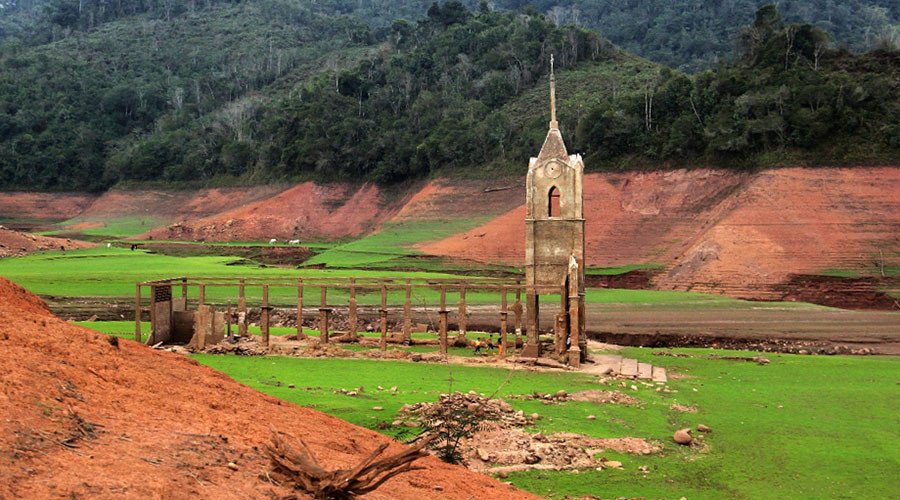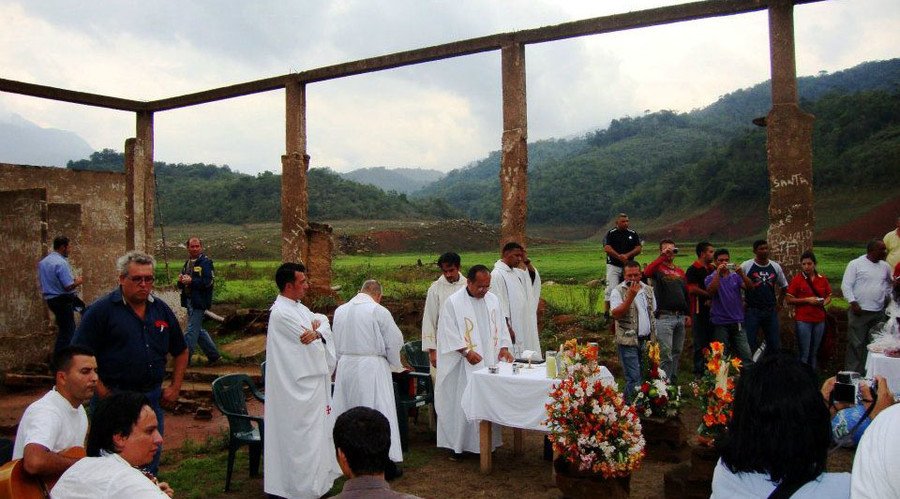Magically unwatered: Venezuelan town flooded 30 years ago reemerges thanks to El Niño (PHOTOS,VIDEO)

The Venezuelan town of Potosi had spent nearly three decades under water after it was deliberately flooded by the government to build a hydroelectric dam. Stunning photos show how the town has finally reemerged due to a drought, caused by the weather phenomenon El Niño.
Potosi, in the western state of Táchira, was once described as a "magical" place, an Andean paradise. It was home to some 1,200 people, who earned a living by working in the fields.

Like many other small towns, it had a store, hospital, school, prefecture, square and church. Potosi was founded in the mid-19th century, explains Jose de la Cruz Garcia, a local historian.

The locals were forced to leave their homes in 1984 when the government of the former president, Jaime Lusinchi, decided to build “Uribante Caparo,” a hydroelectric dam of great importance.



The Potosi ruins, located 1,100 meters above sea level, have resurfaced due to the meteorological phenomenon of El Niño (a weather pattern marked by surface warming in the Pacific Ocean)

The drought has also uncovered the remains of the church of San Isidro Labrador, standing to a height of 26 meters, and built in 1953.
















